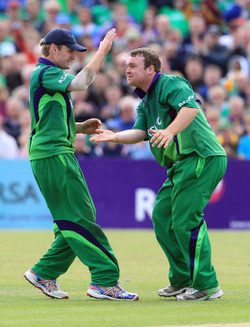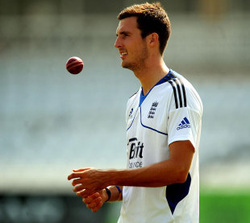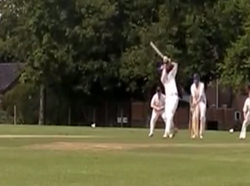
Ireland have played 33 completed ODIs against Test-quality opposition so far, won five of them and tied one. At the same stage in their development, Zimbabwe had won two and tied one, so Ireland have outperformed the two most recently promoted teams.
In the last three years they have been defeated just three times in ODIs by their fellow Associates and Affiliates, and are well ahead of the chasing pack. In the longer form of the game, Ireland have been consistently bagging solid results, despite the fact that they often have to do without their stronger players who are on county duty. Clearly, the quality of the cricketers being produced by the emerald isle is not a problem.
The next argument against Ireland's elevation is lack of suitable stadia. Ireland currently host their home matches at Stormont in Belfast and Clontarf in Dublin. Both stadia boast a capacity of over 5,000 spectators for internationals, but the jewel in the crown is currently under construction in Malahide. The new stadium, fondly named 'The Village', is planned to have a capacity of over 10,000 and will be ready to host England as soon as September next year. Once The Village has been completed, Ireland will be able to spread their fixtures between three top quality venues.
Finally, and most significantly, Ireland has no domestic first-class structure in place. This is both easily remedied and easily overlooked. Ireland's chief executive, Warren Deutrom has outlined a plan to establish a provincial first-class structure, although the plans are currently embryonic. A quicker plan to implement might be to establish three Irish teams, and to invite the Dutch and Scottish A teams to bolster numbers. Ireland would then be able to implement a five-team domestic structure along the lines of the one in Zimbabwe. It should also be noted that Bangladesh received their Test status before their first-class competition was properly established. Only in the season following their first Test match, did the National Cricket League become a first-class competition.
All of these plans could be implemented as soon as next year, with the completion of the Malahide stadium. If the Irish team gets the dozen ODIs they want to play against Full Members, then they can build up to Test status, which could be granted in 2013 or 2014, and would reward the hard work and firm organisation shown by Cricket Ireland since they burst onto the scene in 2007.
And if they take time to find their feet, stick with them. Every team in history has struggled with the step up to Test cricket.

 RSS Feed
RSS Feed

